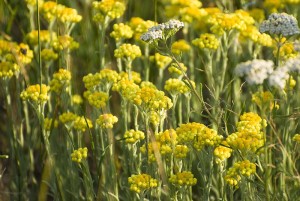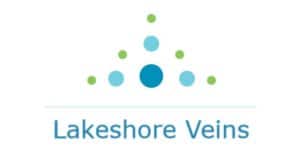Essential Oils for Varicose Veins
I have to say that I do believe in the medicinal value in plants and the natural living things that surround us. The ancient societies including the Greeks certainly knew what plants had antibacterial properties and which ones would help with common problems like heartburn. So, I thought researching essential oils for varicose and spider veins would be an easy topic. How wrong I was!
First thing I noticed is that everyone has a different oil or combination of oils that works for varicose and spider veins. These included, but are not limited to Helichrysum, cypress, frankincense, lemon, fennel, lavender, lemongrass and mustard oils to name a few. Helichrysum oil seemed to be mentioned the most often so I began to research Helichrysum oil. The extracted oil in vitro experiments (meaning on a lab bench, but not performed in a living body) has chemicals which can reduce inflammation and have antioxidant effects. This sounded promising so I read further. There are over 500 different varieties of the Helichrysum plant and not all have the same chemical make up or are even similar for that matter. Therefore, one Helichrysum oil will not work the same as the next. Helichrysum italicum grown on Corsica seems to be the most prized variety for its ability to treat skin spots to sports injuries. Sites on the internet claim wounds and bruises heal faster and it promotes arterial health. This yellow flowering plant grows in the rocky soil along the Mediterranean Sea. It is named heli meaning sun and chrysos meaning gold in Greek and was very much prized by the ancient Greeks. But, there are three types of Helichrysum italicum and even the Corsican variety has a remarkably different chemical composition depending on the time it is harvested. The best time for harvest for maximal potency seems to be June or October/November. How the oil is extracted also greatly affects the potency as I am sure the shelf life.
 Okay, so I cannot control when the plant was harvested, exactly where it was grown or even know how the oil is extracted, but I thought let me give it a try so I set out to buy Helichrysum italicum. I looked at several online vendors. Some list their Helichrysum as pure but that they are in Jojoba oil, so certainly not pure Helichrysum – they do not even list the percentage! Several other varieties of Helichrysum also are sold. Helichrysum splendidium seems to be less expensive, but I cannot find any studies on its chemistry and the same for Helichrysum gymnocephalum. I did find a few vendors for Helichrysum italicum. The European vendor is out of stock which may be a very good sign as it is early in the year and maybe the next harvest it will be available and at its peak. There are several US vendors who sell Helichrysum italicum, but it is expensive – over $100 for 5 ml (1tsp).
Okay, so I cannot control when the plant was harvested, exactly where it was grown or even know how the oil is extracted, but I thought let me give it a try so I set out to buy Helichrysum italicum. I looked at several online vendors. Some list their Helichrysum as pure but that they are in Jojoba oil, so certainly not pure Helichrysum – they do not even list the percentage! Several other varieties of Helichrysum also are sold. Helichrysum splendidium seems to be less expensive, but I cannot find any studies on its chemistry and the same for Helichrysum gymnocephalum. I did find a few vendors for Helichrysum italicum. The European vendor is out of stock which may be a very good sign as it is early in the year and maybe the next harvest it will be available and at its peak. There are several US vendors who sell Helichrysum italicum, but it is expensive – over $100 for 5 ml (1tsp).
I should point out that the FDA has warned in September, 2014 several US retailers for marketing medicinal properties for essential oils as they are not a drug and are not regulated by the FDA.
As a vein doctor, I fully support alternative methods for healing ugly spider veins and varicose veins. In fact, there is research to suggest horse chestnut extract helps with varicose veins. Therefore, we should not dismiss what we do not understand, however, we have no way of knowing what is in the essential oil we purchase. Our ancestors certainly knew much more about essential oils than we do, however, they had far fewer choices and the plant varieties were local to their area.
I will continue to do my research and I certainly need to look into other oils, but for now, my recommendation to care for your varicose and spider veins is to wear compression stockings, elevate your legs, maintain a healthy body weight and walk. Spider vein treatment procedures such as sclerotherapy and laser vein treatment of vein ablation are very effective. Any questions or concerns feel free to contact Dr. Bartel or call (262) 241-3999.



